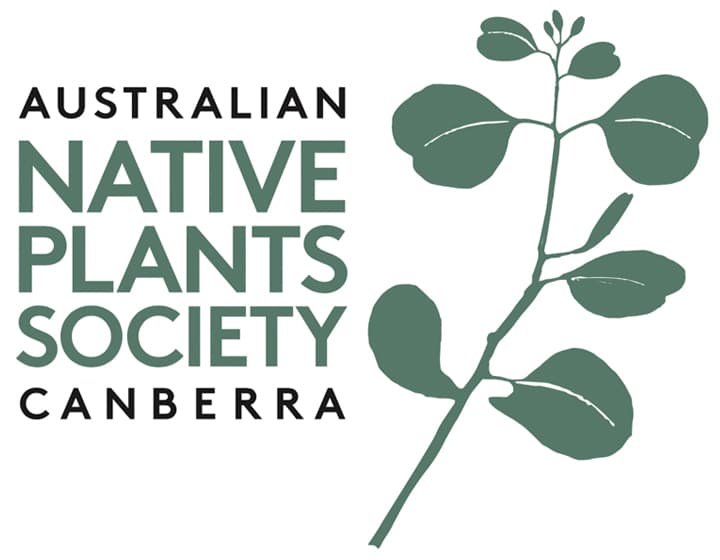Blooming blandfordias
By Robin Shihoff and Linda Tabe
March 2021
It’s an ill wind that blows nobody any good, as they say. The bushfires of last summer in eastern Australia, followed by a wet spring and summer, have produced spectacular displays of many herbaceous understorey plants, including Blandfordia, the magnificent Christmas Bells.
Named after the Marquis of Blandford, the genus Blandfordia is the sole member of family Blandfordiaceae, and contains only four species, all endemic to eastern Australia, and all known by the common name ‘Christmas Bells’.They tend to occur in well-drained spots in otherwise wet, occasionally swampy environments, where they are not too shaded by other plants. The individual flowers consist of three sepals and three petals, fused into a bell-shaped tube with six lobes. The alternating nature of the petals and sepals can be seen most clearly in the photo of B. cunninghamii. One whorl has a clearly defined ‘V’, while the other does not.
The most widely distributed of the four species, and the one most commonly available in plant nurseries, is B. grandiflora. It occurs along the east coast and tablelands, from Sydney to Fraser Island. In the southern part of its range, the flowers are commonly deep orange-red, with yellow tips, similar to the flowers of the other three species. In the sandy, wallum heath along the coast from Brisbane to Fraser Island, the flowers of B. grandiflora range from two-tone to, more commonly, pure yellow.
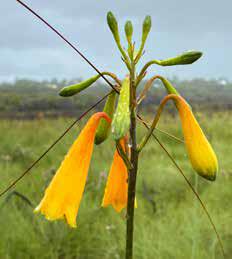
Sunshine Coast and Cooloola. Photos: Susan
Davis (For more of Sue’s photos, and art, see
Instagram @suedavis565 or
https://www.wildflowerwomen.net/)
B. grandiflora survives well in the Canberra region, shown here (photo on the right)growing in a pot of decomposed granite and potting mix, with overhead cover, regular watering and a biannual dose of Thrive liquid fertiliser.
A recently published study examined the effect of fire on flowering of B. grandiflora at Lake Innes Reserve, south of Port Macquarie. Survival and flowering of individual plants were recorded following different fire frequencies, over an extended period. The authors concluded that flowering peaked in the second postfire flowering season, regardless of fire frequency. However, while fire clearly stimulated flowering, other factors, such as temperature and soil type were probably also involved (SJ Griffith and S Rutherford, 2020; Australian Journal of Botany, 68(6): 449–457). B. grandiflora takes three years to develop from seed to flowering, so obviously fires at too frequent intervals would be detrimental to populations of the plant.
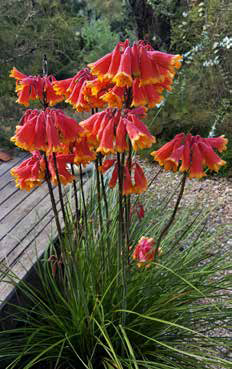
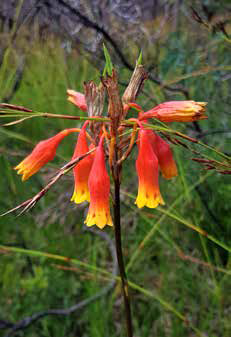
The less showy B. nobilis, is restricted to New South Wales, occurring mainly in the Sydney region. It is found from around Ulladulla in the south, to Gosford in the north, with scattered occurrences northwards, as far as Grafton. The flowers have a characteristic hour-glass shape compared to the simple flare of the other species. The plants pictured were seen in January 2021 along the Mt Bushwalker track, on Little Forest Plateau, on the eastern side of the Budawangs. The plateau was severely burnt in summer 2020, but regeneration is occurring rapidly after the recent rains.
In November 2020, there was a spectacular display of Blandfordia in the Blue Mountains, home of the most restricted of the Christmas Bells, B. cunninghamii. The only other place it is found is Mt Kembla in the Illawarra area. East of Leura, a 5km walking track, hugging the cliffs, and passing through moist dark soil below Mt Hay, offered wonderful vistas of acres and acres of B. cunninghamii.
There were also fields of white flannel flowers, Actinotus helianthi, as well as some of the rare and ephemeral pink flannel flower, Actinotus forsythii. Again, the floral display followed last summer’s fires and good rains in September. The fourth species of Blandfordia, B. punicea occurs in western Tasmania, where is it widespread. The flowers are red on the outside, and yellow on the inside. This specimen was seen near Dove Lake in January 2019.
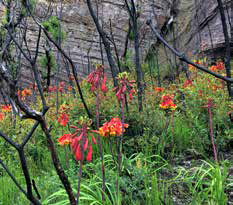
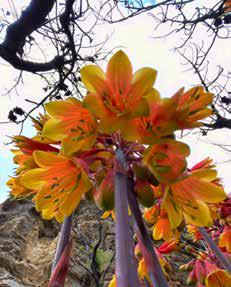
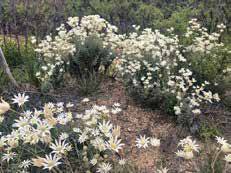
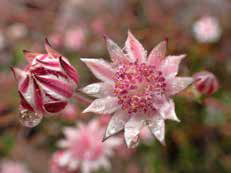
B. punicea occurs in western Tasmania,
where is it widespread. The flowers are
red on the outside, and yellow on the inside.
This specimen was seen near Dove Lake
in January 2019.
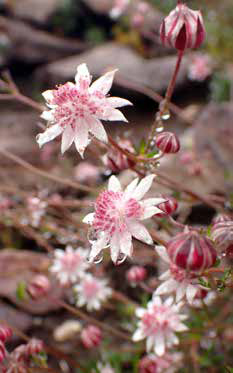
Blue Mountains, summer 2021; Photos Lisa :
Godden (For more of Lisa’s, and other lovely plant
photos, see Instagram @apsnsw)
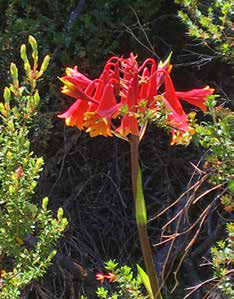
So, all in all, a great year for Wildflowering !
Back to Articles List
